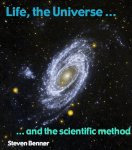The coronavirus forces me to be at home this holiday season. But since I cannot travel physically, perhaps I can traveling a bit back in time.
This is not humankind’s first pandemic scare. In 2019, we worried about African swine flu. In 2015, Zika threatened to create widespread birth defects. In 2009, it was H1N1.
Nor is this the first coronavirus to worry us. In 2014, a patient with “Middle East Respiratory Syndrome” appeared in an Orlando hospital. Caused by a different coronavirus, it took six hours for the staff to guess what it was.
Nor is this my own first interaction with a coronavirus. In 2003, a different coronavirus emerged, this one from Hong Kong. It caused a disease called “severe acute respiratory syndrome”, or SARS. My biotech company, EraGen Biosciences, developed a diagnostic assay that used our 6-letter DNA to detect it. EraGen’s test was approved in China. In the US, the FDA still did not have “emergency use authorizations”, so the scare was finished before the test was approved.
That was the good news. As the reason for it, the 2003 SARS virus was aggressively lethal. It had a 15% fatality rate, meaning that it did not travel well. Further, only patients with symptoms transmitted the virus; this was learned early in the outbreak. The individual who seeded the outbreak in Toronto had traveled by air across the Pacific from Hong Kong, without infecting a single fellow passenger. The outbreak in Manila was then seeded by an individual traveling from Toronto back across the Pacific to the Philippines. Again, no fellow passengers were infected.
Fortunately, our SARS diagnostic kit was not much used. EraGen turned elsewhere, and was acquired by Luminex in 2011 for $34 million. My lab went on to our next generation of alien DNA, things called “self avoiding molecular recognition systems” (SAMRS), “biversals”, and “artificially expanded genetic information systems” (AEGIS).
But the experience was useful. In 2020, a traveling coronavirus emerged, and that was clear very early. “There is an actual medical crisis,” I emailed my group on January 22. “Kevin, tell us sites where we should target SAMRS-AEGIS primers. Zunyi, Hyo-Joong, this virus will be rapidly evolving. Tell me how to use biversals to detect its mutation.” One of our colleagues was returning from China in two weeks. “Will we be in a position to test him?”
The team moved rapidly. The assay was ready when our colleague returned. A few weeks later, our collaborators at GenePath applied for Indian regulatory approval and, in another few weeks, had it. The US FDA agreed several months later, in August.
The speed had benefit: it allowed us to regularly monitor our ~30-person campus and stay open safely. We continued work throughout the pandemic, and we accomplished a lot. Because we could not travel.
Elisa Biondi and Hyo-Joong Kim managed to put the finishing touches on an improved model showing how RNA might have emerged 4.35 billion years ago from a prebiotic soup. With chemical validation for each step, this is a pretty reasonable start towards an answer to the question: “How did life originate?” A paper was submitted.
Jan Špaček and I designed an instrument to detect life on Mars. Since our model for the origin of life on Earth also appeared to work for Mars, that is a reasonable place to look for alien life. Further, Elon Musk is making human traveling to Mars imminent. Once visitation begins, detecting native Martians will become increasingly difficult. We submitted a life detection design to NASA’s PICASSO program.
Because I was not traveling, I was in my office when Dennis Steindler called to introduce us to an outstanding cancer team at the University of North Carolina. This gave us a way to test our nanotrains that deliver drugs to cancer cells. Another proposal written, and a few patent applications, all uninterrupted by taxi rides and hotel check-in’s.
We also had time to re-vamp our production activities. Our un-traveling team built paths for reagents to support enzyme-based DNA synthesis and DNA sequencing. We had time to set up and staff a DNA synthesis facility. And time to begin pipelines to evolve our expanded DNA alphabets.
New biotechnology. New ways to treat cancer. New ways to make and analyze DNA. Kits to model the origin of life, and instrument designs to detect life on Mars. All possible, despite the pandemic. Because of the pandemic?
What now? Well, it will take months for “peer reviewers” to reject our manuscripts, our proposals, and our Mars life detection plans. More time.
So I am now becoming more attentive to the blog. What will future posts be about? Whatever interests, including more on the topics just mentioned.
Talking about “big questions”: Life in the universe. Do extraterran aliens exist? What might they look like and how might we find them? How might we create life of our own in the lab? The scientific method that informs us about these big questions.
Communicating how scientists think (and fail to think) about such things has never been more important, and we have a lot to talk about.

